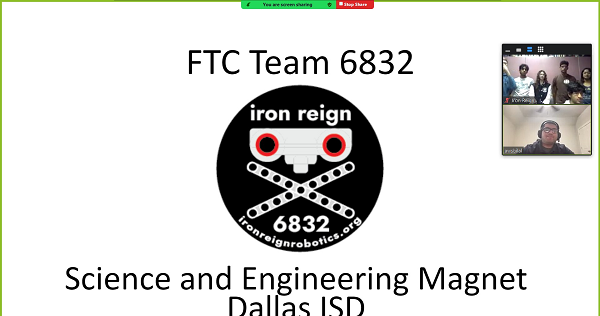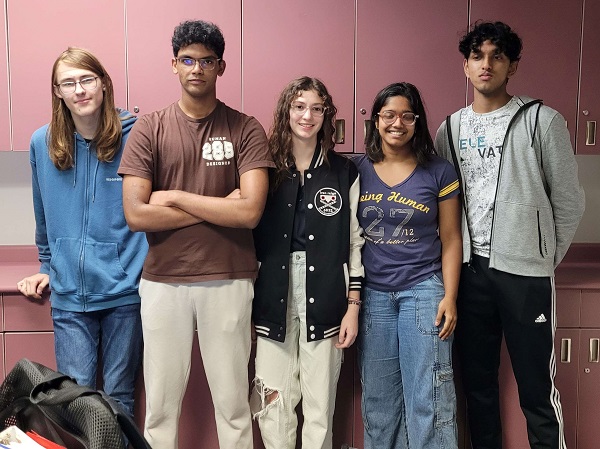AWS Solutions Architect Connect Meeting
Tags: journal and connectPersonhours: 6
Task: Get Advice from a AWS Solutions Architect

Today, 6 members of Iron Reign virtually connected with Bilal, an Amazon Web Services (AWS) Solutions Architect, in order to present our team and gain some valuable advice. As a Solution Architect, Bilial focuses on designing, setting up, and troubleshooting client-server solutions through the AWS infrastructure, which involves technical skills, teamwork, and a lot of problem-solving.
In our meeting with Bilal, we first talked about our team and the robots we build. We touched on team structure, our core team principles, and some of our recent successes. However, with Bilal’s knowledge of robotics, the Internet of Things(IoT), and work experience, we quickly moved on to discuss our recent projects and team struggles.
One central point of emphasis was our summer projects from the past 2 years: Mechavator and R2V2, which we spent a hefty amount of time discussing. These projects, in which we used REV hardware and FTC software to automate 2 modern vehicles, are heavily related to modern IoT practices in companies like AWS.

Additionally, we focused on our core team’s recent open-source work, where they contributed to the FTC Dashboard repository, adding features such as field transformations, expanded image and text handling, and a variable origin.
Finally, as a team, we brought up many of our shortcomings and points of improvement in hopes of gaining some advice. We identified a few key issues: a lack of cohesion between the build/design and code subteams (we often have serious time crunches around competition), poor time management, an absence of proper planning, and the need to transfer knowledge between seasons.
On these topics, Bilal gave some great advice. Regarding knowledge transfer, Bilial noted that this was also a significant issue at AWS since the technical landscape is constantly changing and information grows outdated quickly. He says even AWS internal documentation and blog posts can often be inundated. For us, he suggested we expand existing documentation and knowledge base, such as adding more blog posts, creating CAD walkthroughs/tutorials (AWS does a lot of digital panels and videos), and further engaging our vast alum network.
Moreover, on time management, Bilal mentioned the Kanban method and the tool Asana as pathways we could test. Finally, he suggested that to allow for greater coordination between build and code; we look at simulation services such as AWS Robomaker, which would allow code to get started earlier and could serve as a valuable addition to our documentation efforts.
Overall, though, thanks to Bilal for taking the time to meet with us. We had a great conversation and took away a lot of great feedback. We hope to meet with Bilal in the future and show him our CenterStage Robot!
